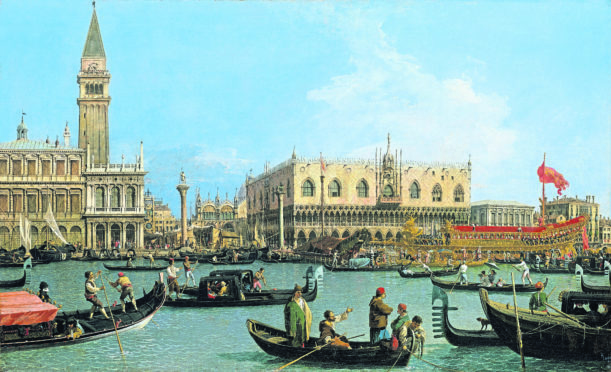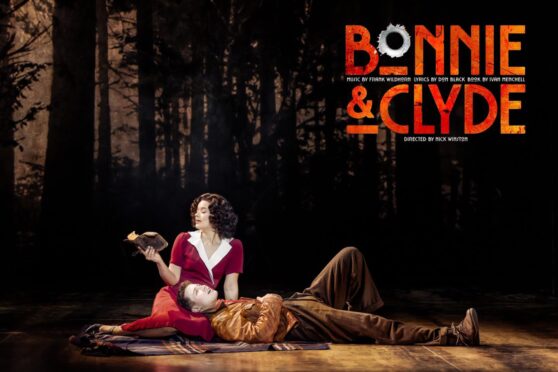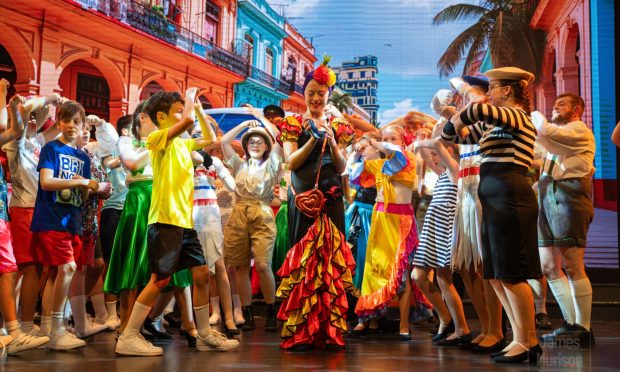Young monarch George III made a brilliant decision when, in 1762, he decided to buy almost the entire collection of works by Joseph Smith, the greatest patron of art in Venice at the time.
Thanks to this single purchase, which cost the King £20,000, the Royal Collection contains one of the finest groups of 18th Century Venetian art in the world, including the largest collection of works by Giovanni Antonio Canal, better known as Canaletto.
This summer, The Queen’s Gallery in the Palace of Holyroodhouse is staging an exhibition which will include the largest ever showing of Canaletto paintings in Scotland.
Featuring more than 100 paintings, drawings and prints from the Royal Collection’s exceptional holdings, the exhibition entitled, Canaletto & the Art of Venice, displays the work of Venice’s most famous view-painter alongside that of his contemporaries, including Sebastiano and Marco Ricci, Francesco Zuccarelli, Giovanni Battista Piazzetta and Pietro Longhi, and explores how they captured the essence and allure of Venice for their 18th Century audience, as they still do today.
And what of Joseph Smith, the man who sold the artworks to the king?
Born in 1674, he was an English merchant who later became British Consul in Venice, a post dealing with Britain’s maritime, commercial and trading interests. He’d moved to Italy around 1700 and over several decades built up an outstanding art collection, acting as both patron and dealer to many contemporary Venetian artists.
The artist known as Canaletto used Smith as an agent who then sold his paintings to the wealthy tourists drawn to Venice’s cultural attractions. His palazzo on the Grand Canal became a meeting place for collectors, patrons, scholars and tourists, where visitors could admire his vast collection and commission their own versions of Canaletto’s views to take home.
One of the most important of Smith’s commissions from Canaletto was the series of 12 paintings of the Grand Canal, which together create a near complete journey down the waterway. Canaletto’s sharp-eyed precision makes these views seem powerfully real, yet he rearranged and altered elements of each composition to create ideal impressions of the city.
Two larger paintings are of festivals, including the ‘Sposalizio del Mar’, or ‘Wedding of the Sea’, which took place on Ascension Day and attracted crowds of British visitors.
The Grand Canal was a subject frequently captured by Canaletto, including in a series of six drawings, among them the central stretch of the Grand Canal, c.1734. Intended as works of art in their own right, rather than as preparatory studies for paintings, the drawings are carefully constructed and rich in tone and detail.
Alongside the grand public entertainments, Venice boasted a thriving opera and theatre scene, especially during carnival season. The need to create stage sets within a very short period of time provided plentiful employment for Venetian artists.
Both Marco Ricci and Canaletto worked for the theatre, where they learned how to manipulate perspective to heighten drama. The exhibition includes one of Ricci’s designs for the Venetian stage, Room with a balcony supported by Atlantes, c.1726. Marco Ricci also produced caricatures of opera singers, such as the drawing of the internationally famed castrato Farinelli, which were circulated among Joseph Smith and his fellow Venetian collectors and opera aficionados.
Two chalk drawings on blue paper by Giovanni Battista Piazzetta represent Venetian character types, including a boy holding a small dog. Piazzetta’s ‘character heads’ were highly sought after by collectors. Smith used to display his large collection of Piazzetta drawings in frames on the walls of his Venetian residence. While exposure to daylight has resulted in the blue paper fading to brown, the beautiful quality of the drawings remain the same.
Both Canaletto and Marco Ricci contributed to the development of the genre known as the capriccio – scenes combining real and imaginary architecture, often set in an invented landscape, to create poetically evocative works. The ruins of ancient Rome in Ricci’s Caprice View with Roman Ruins, c.1729, and of Padua in Canaletto’s A Capriccio View with Ruins, c.1742–4, convey a sense of the irrevocable loss of a great age.
Trade and tourism in mid-18th Century Venice was affected by the War of the Austrian Succession and the Seven Years’ War, which in turn disrupted several of Consul Smith’s business ventures.
Aged nearly 80 years old, Joseph Smith made plans to sell his exceptional library of books, drawings and prints, and his collection of paintings. The ‘Bibliotheca Smithiana’, a volume of the contents of his library produced by the Pasquali press which Smith had founded, acted as a sale catalogue for potential buyers.
Advisors to George III began negotiations in the 1750s and in 1762 the sale of Smith’s library and paintings collection to the King was agreed for the sum of £20,000.
The exhibition of priceless art is now open and can be seen at The Queen’s Galley, Palace of Holyroodhouse, Edinburgh until Sunday October 21. An accompaning book, Canaletto & the Art of Venice, published by Royal Collection Trust, is on sale now price £29.95.
For visitor information and tickets contact: www.royalcollection.org.uk or call 0303 1237306.










